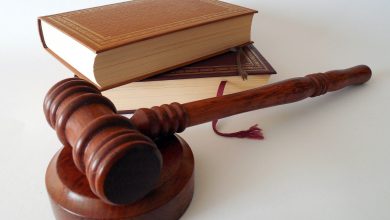Are Forgery and Counterfeiting a Crime?

Forgery is the crime of creating, producing or adapting documents or objects with the intent to defraud another person. An individual is found guilty of forgery if they alter the writing or makes any writing of another person/entity and declares it to be that of the other person who did not authorize the act.
On the other hand, counterfeiting is producing or creating an unauthorized copy of an authentic object to defraud another person. In simple terms, counterfeiting is done with the intent to pass-off the counterfeited product as an original item fraudulently. Usually, counterfeit products are created by people to reap the benefits of the established value of a particular product.
Although the term counterfeit is usually linked with making, dealing, or possessing any counterfeit currency, it also includes forgeries of official documents and imitations of physical products and trademarks. Counterfeiting leads to patent or trademark infringement in the case of physical products. Creating, dealing, or possessing any stone, plate, analog, or any other component used for counterfeiting also amounts to the offense.
Modern-day society depends extensively on the creation and exchange of legitimate and reliable documents or papers. Forged documents can entail grave and wide-ranging negative repercussions on individuals, businesses, and political parties. This is the reason why the punishment for forgery is quite harsh.
Traditionally, forgery included only making or changing false writing. Holding, using, or delivering false writing to defraud was considered a separate crime, called “uttering a forged instrument.” If a person used a false identification card to get credit, they would be held guilty of uttering a forged instrument, although he or she did not really create the fake ID card. Currently, most states in the United States consider both as the single offense of forgery.
Although forgery and counterfeiting cases can be sued on a state level, these offenses are usually investigated by the Federal Bureau of Investigation (FBI). With the prevalence of so many kinds of coin, currency, and documents, there are over a hundred different actions that may fall under a forgery or counterfeiting crime. In cases where the forgery or counterfeiting accusation is of currency or monetary nature, the higher the monetary amount of the alleged offense, the harsher is the criminal charge against the accused.
Forgery

How to Prove Forgery
The prosecution will have to prove certain elements to convict a person of forgery. These are as follows:
1. Creating, changing, possessing, or using
The first factor to consider in a forgery crime is that the person must create, change, use, or possess a false piece of writing. Many people consider forgery as only the making of false writings; for example, certificates or official letters. However, changing an existing piece of writing is also considered forgery if the modification is “material” in nature or influences the legal right of any person.
For instance, faking the signature of another person on a document is considered a material alteration since it falsifies the identity of the document’s signatory. Obliterating, adding, or altering significant parts of documents is also considered “material” alterations if these changes somehow affect the legal rights mentioned in the papers. Also, using or holding misleading writings accounts for forgery, albeit this is considered “uttering a forged instrument” in some jurisdictions.
2. A fake writing
The definition of forgery does not include all writings. To amount to charges of forgery, the writing must have a legal significance and should be fake.
Legal Significance
The writing must have obvious legal significance. Some examples of these include: documents issued by the government, such as passports and driver’s licenses; financial instruments, such as money, checks, or stock certificates; transactional documents, such as conveyances, deeds, and receipts; and other materials, such as medical prescriptions, patents, wills, and artworks.
To bear legal significance, it’s not necessary for a written document to be legal or government-issued; it must affect the legal obligations and rights of the person. This is the reason why documents like letters of recommendation and physicians’ notes may also be a part of a forgery crime. On the other hand, signing the name of another person in a letter to a family member or friend would most likely not amount to forgery, because this letter would not bear legal significance in most cases.
Fake
The writing in question must be fake. For a ‘writing’ to be false, it must be materially altered or fabricated, and it seeks to show something that it is not in reality. Usually, just adding false statements to a written document is not sufficient to meet the “false” criterion if those misstatements do not alter the basic essence of the writing. For instance, if one adds a false statement to a letter he or she wrote, they have not committed any forgery. But it will be considered forgery if they do the same with a letter having legal significance, but show it as a letter drafted by somebody else.
3. With the objective to defraud
For a person to be held guilty of a forgery offense, he or she must have the object to defraud some entity; for example, a government entity. This element averts people who have or who sign misleading documents without the knowledge that the documents are fake from facing any criminal liability. As an example, if a person buys a second-hand car, but later realizes that the seller forged the title to the vehicle, he or she would not face any forgery charges for holding the forged title because he or she did not wish to defraud anybody.

Federal Anti-Forgery Laws
Forgery is usually tried at the state level, but certain forgery cases are thought of as felonies under federal law. Identity theft is a classic example. It is a type of fraud where a person forges a writing to take the identity of some other person. The federal law considers it a felony and punishes perpetrators by imposing a heavy fine and imprisonment for many years.
Also, federal law bars other types of forgery, which are as follows:
- Counterfeit currency
- Forging discharge certificates of military personnel and immigration documents
- Forgery to swindle the federal government
US law considers forgery a federal offense if a person possesses a forged document or posts it across multiple states.
Penalties for Forgery
Forgery is considered a felony in all 50 states of the US. The offense is punishable by a series of penalties, such as imprisonment, probation, hefty fines, and reparation (compensating the person for goods or money lost due to the crime). However, some states consider only certain forgery misdemeanor offenses, which the law punishes more sparingly compared to felony offenses. Punishment for such crimes includes a maximum imprisonment period of a year in most American states.
Certain state laws lay down a wide spectrum of punitive actions for forgery so that courts can ascertain the right punishment for a particular crime. In Oregon, for example, the punishment for forgery could span from trial and community service (in case of a misdemeanor), to imprisonment of five years and a fine of $125,000 (in case of a felony).
In the state of Minnesota, such penalties for check forgery may vary as per the sum of money in question. Forging of checks of $250 or less calls for nearly one-year imprisonment and a fine of $3,000. However, when the sum is more than $250, the imprisonment period increases to five years, along with a fine amount of $10,000.
Many states in the country focus particularly on the kind of documents in question when ascertaining the punishment. For example, in New York, a forgery offense is considered “first-degree forgery” in case of monetary currency, stocks, securities, or bonds. Here, second-degree forgery includes government-issued documents, deeds, public records, or medical prescriptions. Additionally, third-degree forgery includes any other kinds of documents. In this state, both first and second-degree forgeries are considered felonies, and third-degree forgery is termed a misdemeanor.
Possible Defenses to Forgery
The individual who is charged for forgery will require an attorney to provide criminal defense against the crime. They can afford a plea bargain in certain situations, but the attorney needs to present a valid argument in favor of the person and protect their legal rights.
The legal defenses to a forgery allegation start with whether the alleged victim approved of their actions. If this applies, the lawyer will authenticate this claim with the victim because law enforcement generally rules this out before suggesting that a legal case be filed.
The second defense to forgery relates to the issue of whether the person’s conduct is deliberate or not. This means they may have been mistaken since they did it without any intent to defraud anybody. This is particularly a tricky defense to prove if there is a financial benefit involved.
The third common defense to forgery is that the case is one of misleading evidence. The person did not sign the financial instrument or change the document as alleged. In other words, they are innocent since someone else committed the offense.
Counterfeiting

How to Prove Counterfeiting
The anti-counterfeiting regime in the United States is based on two distinct federal statutes: the Lanham Act (15 USC § 1051) and the Trademark Counterfeiting Act 1984 (18 USC § 2320). The Lanham Act directs the establishment of trademark rights and civil anti-counterfeiting enactment. On the other hand, the Trademark Counterfeiting Act makes it a federal offense if there is any violation of the anti-counterfeiting provisions of the Lanham Act.
Under Section 45 (15 USC § 1127) of the Lanham Act, a counterfeit mark is defined as a “spurious” mark, which is substantially identical to a registered mark. So registration of a trademark with the US Patent and Trademark Office is a precondition to making a valid counterfeiting claim under federal law. Initiating liability for counterfeiting needs a higher degree of copying than basic trademark infringement. Counterfeiting requires the accused trademark to be “identical or indistinguishable” from another’s registered trademark, but liability for trademark infringement requires only the following:
- Colorable copying of a registered mark that is likely to confuse, or cause mistake, or to deceive, or
- The use of any name, symbol, or term that is likely to confuse, or cause mistake, or to cheat in the case of an unregistered mark (as per 15 USC §§ 1114, 1125(a)).
Counterfeiting is subject to more serious civil damages and certain kinds of emergency relief, which do not apply to the usual trademark infringement cases. Also, border measures and criminal enforcement are available only to tackle counterfeit marks.
What Other Items are Counterfeited?
Federal counterfeiting law is not confined only to monetary currency. Other types of counterfeiting prohibited by federal law include the following:
- Documents issued by certain lending agencies, such as the Reconstruction Finance Corporation, the FDIC, land banks, and insured credit unions
- Bids, bonds, proposals, contracts, affidavits and public records created or altered to defraud the federal government
- Documents related to imports and customs duties
- Seals of government agencies
- Federal court documents
- Postal stamps

Penalties for Counterfeiting
To initiate criminal enforcement of trademark counterfeiting in the US, the owner of the trademark can report the offense to various state and federal law enforcement authorities; for example, the National Intellectual Property Rights Coordination Center (IPR Center). This is a collaboration by more than nineteen US government investigative and regulatory partners, including the FBI.
After receiving a report, concerned investigators will collect evidence of the counterfeiting act. The trademark owner must work together with the US law enforcement authorities to provide the necessary evidence required to prove both the validity of the owner’s rights and that the commodities being sold are inauthentic. Once the authorities have enough evidence, they will initiate counterfeiting charges against the accused person.
If convicted of the offense, the accused will face criminal penalties for deliberate or unsanctioned use of a trademark. Penalties for first-time offenders are usually up to ten years of imprisonment, along with a fine of two million dollars if the accused is an individual. In the case of a corporate entity, the fine amount may be five million dollars. For repeat offenders, the penalty may be an imprisonment period of up to 20 years, along with a five million dollar fine (for an individual) or a $15 million fine (for a corporate entity) as per 18 USC § 2320.
Counterfeiters who are convicted are generally ordered to compensate victims. The government may appeal for more penalties for acts of counterfeiting that result in serious bodily injury. These penalties include life imprisonment, where an accused knowingly causes or tries to cause death in relation to counterfeiting. The government may also seek more penalties where it finds criminal counterfeiting of military goods, services, or drugs.
In most cases, authorities will also take hold of the counterfeit goods during the investigation and destroy or dispose of them. Law enforcement in the United States may prosecute not only the producer of the counterfeit goods, but also any other persons who are actively trafficking such goods. So law enforcement authorities may take hold of any property, storage facilities, equipment, and cars related to the manufacture and transportation of counterfeit products during the investigation.
Possible Defenses to Counterfeiting
A person who has been charged with counterfeiting securities and obligations in the US may appeal that they are not guilty because they did not have the intent to defraud anybody. For instance, a person accused of changing monetary currency may argue that the currency was altered unknowingly or jokingly, and that would not account for cheating anyone.
A person charged with creating a copy of a Treasury plate would most likely be unsuccessful in proving a lack of intent to defraud, as the provision criminalizing imitations of Treasury plates does not require the defrauding purpose.
An accused person might also claim that the quality of the counterfeit currency is so poor that it does not conform to the legal definition of counterfeit. However, the law does not require counterfeit bills to be so similar to authentic bills that only an expert can tell the difference. Crude imitations that do not have significant identifying traits of real currency may not qualify as counterfeit for criminal prosecution.
Therefore, a person who tries to recreate currency may be innocent of counterfeiting if the false currency is such an imperfect copy that it would likely not deceive a layperson into believing that it is genuine. However, this defense has its limitations. A person may be convicted of counterfeiting monetary currency when only one side of a currency has been copied, and the other side is left blank.

Both forgery and counterfeiting are severe offenses in the eyes of federal law. Any person accused of these offenses will require a criminal lawyer to prove their innocence. It is always best to go for an experienced attorney who has a track record of successfully dealing with such cases.



